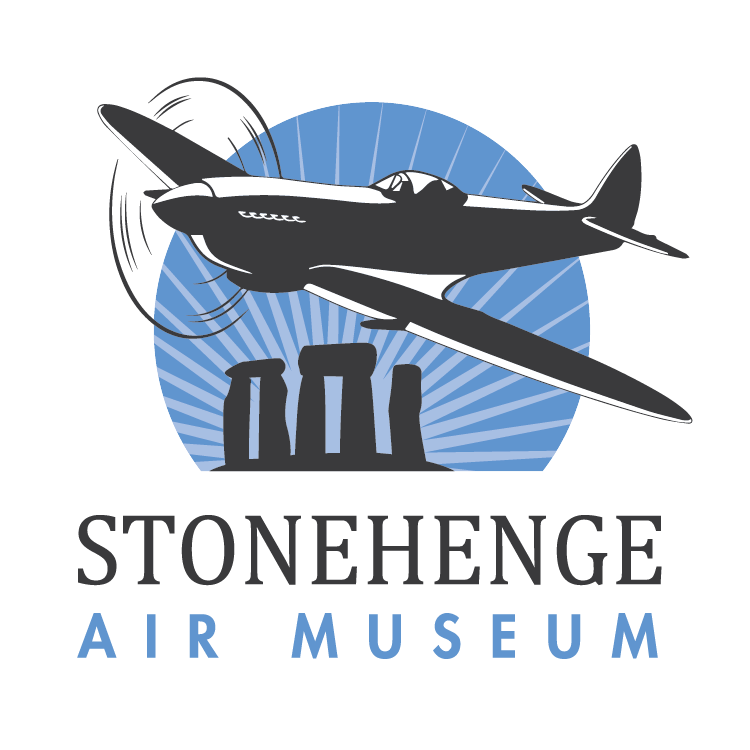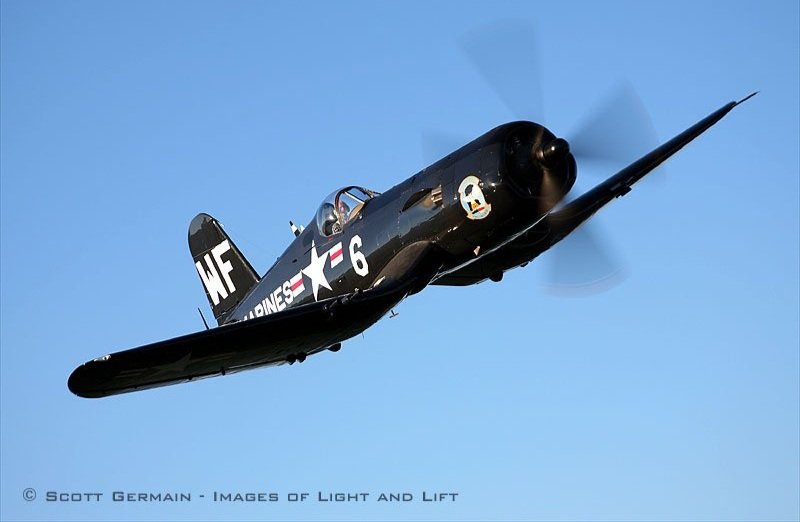1948 Chance-Vought F4U-5NL “Corsair”
The F4U-5NL Corsair was manufactured by Chance-Vought in 1948 and delivered to the USMC in March of that year. The “Dash 5” was fitted with a Pratt & Whitney R-2800-32W engine with dual supercharger to provide 2,350 hp at altitude. The 32W engine also used a water-methanol injection system that could provide a “War Emergency” power boost to an astonishing 2,760 hp for short sprints.
This aircraft was equipped with four 20 millimeter cannons, four bomb/rocket racks under each wing, and could carry an additional drop fuel tank and two napalm tanks. It was modified as a “Night Fighter” with a radar dome mounted on the right wing (since removed) and had been “winterized” for use in low temperature environments, thus the designations N and L.
The original Corsair design specified use of the Pratt & Whitney R-2800, the most powerful production engine available at the time. Harnessing all this horsepower necessitated the use of the largest production propeller available, the 13 ft. 4 in. Hamilton Standard. A byproduct of this marriage was a lack of deck clearance for the massive propeller. Since carrier-based aircraft required short, stout landing gear capable of withstanding the pounding of carrier landings, the ingenious inverted gull-wing shape was employed to raise the propeller arc to a safe distance above the deck.
The aircraft on display flew in combat in the Korean War as part of VMF(N)513 and VMF 212 performing night interdiction missions in addition to night attacks on enemy vehicles moving down from the North. It also provided night scramble alerts to meet aircraft incursions from the North as well as close air support to front line units. After her Korean service and an Atlantic tour aboard the USS Tarawa, this Corsair was stricken from service with the U.S. Navy and sold to the government of Honduras in 1956.
During her 22 years of service in the Honduran Air Force, this Corsair flew in combat against Nicaragua in 1956 as well as in the so called “Football War” against El Salvador in 1969. These aerial engagements in 1969 proved to be the very last aerial combats between piston-powered propeller-driven aircraft in history.
This aircraft was returned to the United States in 1978 and underwent a complete rebuild by Ezell Aviation in Breckenridge, Texas, which included a change of livery back to the way she appeared when flying with the “Flying Nightmares” of VMF(N)513 during the Korean War. This aircraft was acquired by Jim Smith in 1992.



